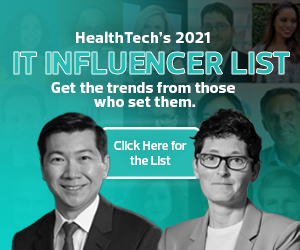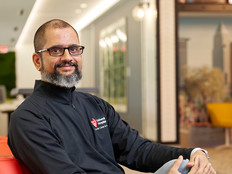HEALTHTECH: How did you end up in the nursing field and what drew you to innovation?
LEARY: I was always really interested in research and science and had seen a brochure from our local university, Thomas Jefferson University, about nursing research, and it really intrigued me. I lived in Boston for a while and had worked with a visiting nurse who was just seriously one of the smartest, most compassionate people I had ever encountered. It was because of that interaction with that nurse that I thought that nursing might be a career I’d want to get into, but I never wanted to be a clinician. I never really wanted to do bedside nursing. When I saw that brochure about being a nurse researcher, I knew it was the best of all worlds. So, I went to school at Thomas Jefferson University, got my bachelor’s in nursing, and then I worked in the medical ICU for a short period of time before starting my career as a resuscitation researcher.
That’s really where I got into innovation and technology. I was doing resuscitation research for over a decade, and it was closer to the end of my career as a resuscitation researcher, where I started trying to think about how we could improve training and education for clinicians as well as lay responders. When somebody has a sudden cardiac arrest out in public, and we have just the general public who respond, how we could potentially make our CPR training sessions much more effective and efficient using technology to enhance the training that we were doing? That’s where my interest in the innovation technology really began.
READ MORE: Why nurses are key to a strong health IT strategy.
HEALTHTECH: What does innovation in nursing mean to you? What does that look like for you?
LEARY: How we define innovation at Penn Nursing is really the creation of something new or the use of something already in existence that adds value. We’re not solely talking about technologies. It’s really the systems and processes we create, the methodologies we use to solve problems, and how we communicate with our patients, their families, each other and the community at large. All those things can be done through an innovation framework.
HEALTHTECH: What led you to this point in your career after wrapping up your resuscitation research and what are you planning next?
LEARY: I have a master’s in nursing and a master’s in public health, so I’ve been teaching a research course for undergrad senior nursing students Penn Nursing. I was really interested in innovation, and I thought from my work in resuscitation that nurses should be leading in the innovation space. It really fit nicely with all the work that we do. The nursing process and the innovation process are so very similar, and it just seems like health and healthcare innovation was a space where nurses could thrive.
Luckily, at the time, Penn Nursing was starting to think about innovation as well, and so I was fortunate enough to talk with the leaders there about my interest in nursing-led innovation and their interest in innovation, and it sort of just worked out that they bought a day of my time. At the time, I was still in my resuscitation science role, so they bought out a percentage of my time to start exploring what a nursing innovation curriculum and program at Penn Nursing would look like, and then it just exploded. I came over two days a week, then three days a week, and then they hired me full time as their first director of innovation.












